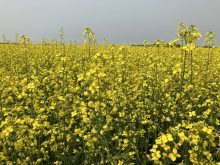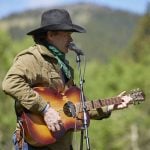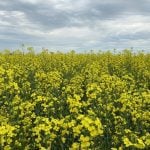In April this year my wife Bev and I joined Canada’s Liberation Tours on a coach trip through western France, Belgium and the Netherlands to participate in events marking 80 years since Canada’s troops took part in the liberation of the Netherlands from Nazi occupation in the Second World War. The efforts of these brave soldiers freed a population from starvation and incarceration. The tour also recognized the efforts and sacrifices of Canada’s soldiers in the First World War.
First World War
The Battle of the Somme was a strategic, costly and hard-fought battleground for both sides. The conflict in this area lasted from July 1 to Nov. 18, 1916 — four and a half months of constant back-and-forth push in a huge attempt to advance for whatever territory could be gained. During one of the battles, 20,000 casualties occurred in one hour. One million soldiers, including more than 24,000 Canadians, died or were wounded.
Read Also

Gentle treatments for pain in the neck
Heading toward year-end, people unknowingly tense up against the cold and busyness, causing neck pain that can often be treated with appropriate support and gentle mobility, athletic therapist Kathlyn Hossack says.
At the Courcelette Memorial site we stopped to remember those who fought at the Battle of the Somme. At the Thiepval Memorial we witnessed a tribute to over 72,000 unknown soldiers who died and are memorialized there. At the Trail of the Caribou monument at Beaumont-Hamel we took a moment to remember the Newfoundland Regiment that was totally wiped out.
READ MORE: November: A month for remembrances
We visited Cabaret-Rouge cemetery with 7,000 gravesites, from which the body of an unknown soldier was exhumed and returned to Ottawa, where it lies in state in a tomb on Parliament Hill. Then we arrived at Vimy Ridge to stare in wonder at the imposing memorial to Canadian soldiers who fought so valiantly to take the ridge.
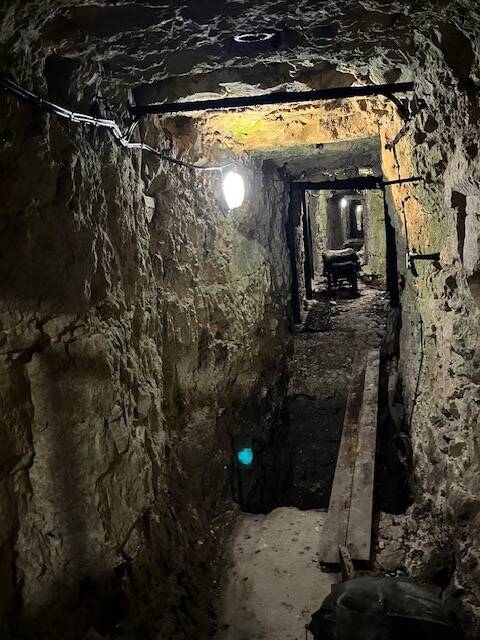
We struggled to grasp the enormity of what had happened at Vimy. We walked in reconstructed trenches and were told that 25 metres away were the German trenches. Soldiers could smell each other’s cooking and cigarette smoke and hear chatter and even snoring from the other side. More than 3,600 Canadian soldiers were killed and 7,000 wounded in four days of fighting at Vimy.
In Belgium we visited the Passchendaele battle site and were told of the mud, the injury, more mud, loss of life, screams, gunfire and drowning in even more mud. Passchendaele was successful but fighting there lasted for four years, in a “bite and hold” form of grinding warfare over just eight kilometres of muddy plain. There were more than a million casualties at Passchendaele. While there, we were shown a field where Bev’s grandfather, George McNeil would have been laying communication cable for the trenches. We were just 50 metres away. At Tyne Cot Cemetery are buried almost 12,000 soldiers from 10 different countries, including 966 Canadians, all from the battles of Passchendaele.

At the Menin Gate at Ypres (Ieper) we attended an 8 p.m. memorial service, which has taken place every night (except during the Second World War) since 1928 to remember those who fought to preserve freedom for the local inhabitants.
Second World War
We visited the beaches of Dieppe to witness the site of the disastrous Aug. 19, 1942 raid, an ill-advised campaign sacrificing 60 per cent of the Canadian soldiers who fought there. From German pillboxes huge enemy guns could swivel to shoot down on the beach or out to sea to maim and destroy incoming landing craft that carried the brave soldiers and equipment. All the while aircraft from both sides created a deafening roar as they battled above the beaches.
Operation Overlord was the name of the D-Day landing on the beaches of Normandy on June 6, 1944. General Dwight Eisenhower commanded five areas of attack along the beaches, code-named Utah, Omaha, Gold, Juno and Sword. More than 156,000 soldiers landed despite high winds and rough seas, which made the landings treacherous. Earlier we had visited the site called Pegasus Bridge where three gliders carrying soldiers and small tanks had flown and landed, in the darkness of night, within 50 metres of a fortified bridge and silently overwhelmed German guards. This strategic manoeuvre helped Canadian and British forces who landed at Normandy to cross this important canal to push back German forces.
In the Netherlands we visited Abbaye d’Ardenne where Canadian POWs were executed by order of German Divisional Commander Colonel Kurt Meyer. My cousin, Lance Corporal Ron Gompf, was later placed in charge of guarding POW Meyer and wanted to disarm him, but wasn’t allowed to disarm a POW who was of a higher rank.
We stopped at several small towns where our soldiers had valiantly fought. In each town the townsfolk never forgot the gallantry displayed by the Canadians and monuments were erected to honour the Canadian soldiers who lost their lives there.
In Apeldoorn we saw the home of Princess Margriet, who was born in Ottawa in 1943 in the Ottawa Civic Hospital. Her maternity ward and two floors of the hospital had been declared sovereign Netherlands territory so she could be born as a Dutch citizen.
On April 12, 1945 Canadian soldiers liberated the village of Westerbork. Camp Westerbork had been a camp for Jews from all over the Netherlands to wait their turn to be sent in cattle cars to Auschwitz and Sobibor in occupied Poland. Starting in January 1942, close to 100,000 Jews of all ages passed through Westerbork; upon liberation there were only 1,000 left in the camp. Many had been deported just as Canadian soldiers advanced toward the camp. We silently walked around the shell of the camp, which is a stark reminder of its existence.
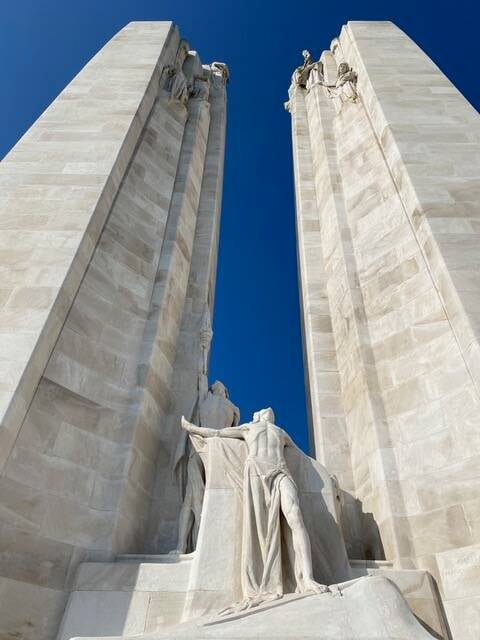
At the Groesbeek Canadian War cemetery we attended a solemn ceremony complete with a marching band of drums and bagpipes and featuring a number of Canadian veterans of the war. Some were in wheelchairs and a 102-year-old veteran made an impassioned presentation. While in Groesbeek we also toured the Vrijheidsmuseum (Freedom Museum), which included a stark graphic display of the number of people, civilians and soldiers killed in the war, estimated at a frightening 70 to 85 million.
With a few thousand other folks, we attended the Memorial Presentation of Remembrance that takes place every year at Holten Canadian War Cemetery and in 2025 marked the 80th year since Canadian soldiers liberated the Netherlands from Nazi tyranny. Again, Canadian veterans were present to speak and lay wreaths. Princess Margriet was present, Governor General Mary Simon spoke, and local schoolchildren placed two roses at each tombstone. Canadian pipe and drum bands played and the poem “In Flanders Fields” by John McCrae was read. Taps and The Last Post created an eerily silent audience. It was certainly an emotional experience that one will never forget.
The most unforgettable emotions at all the cemeteries we visited, and the most poignant memories, were the ages engraved on the tombstones. A name followed by an age — 18, 19, 20, 21, 22. These were just kids, who lived and died fighting for the freedom we enjoy today. They were somewhat innocent but brave beyond their years. They had answered the call and they died for our freedom. And one couldn’t help but hear their whispers: “Please remember us.”




